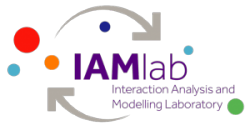Happy to announce our work on predicting the perceived complexity of web pages called “Automated prediction of visual complexity of web pages: Tools and evaluations” published in “International Journal of Human-Computer Studies”.
Eleni Michailidou, Sukru Eraslan, Yeliz Yesilada, Simon Harper, Automated prediction of visual complexity of web pages: Tools and evaluations, International Journal of Human-Computer Studies,
Volume 145, 2021, 102523, ISSN 1071-5819, DOI: https://doi.org/10.1016/j.ijhcs.2020.102523.
Abstract: Understanding visual complexity as it relates to websites has been an emergent area for many years. However, predicting the visual complexity of a website as perceived by users has been a real challenge. Perception is important because it influences user engagement, dictating if they will find it dull, engaging, or too complex. While others have suggested solutions to certain levels of success, here we propose a simple but accurate model that generates a Visual Complexity Score (VCS) based on common aspects of an HTML Document Object Model (DOM). We created our model based on a statistical analysis of 3300 ratings of 55 users on 30 web pages. We then implemented this prediction model in an open source Eclipse framework called ViCRAM that both predicts and visualises the complexity of web pages in the form of a pixelated heat map. Finally, we evaluated this model and the tool prediction with another user study of 6240 ratings of 104 users on 30 web pages. This study shows that our tool can predict the perceived complexity with a strong correlation to users’ perceived complexity.
Keywords: Visual complexity; Prediction; Perception; Automated tool
